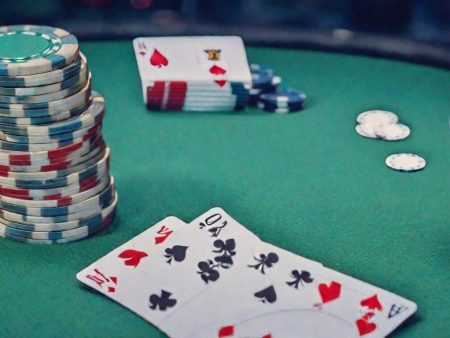In poker, players rely on various concepts and statistics to better understand their opponents’ actions and refine their strategies. Two essential metrics in this process are VPIP (Voluntarily Put Money in Pot) and PFR (Preflop Raise), which offer crucial insights into how others approach the game.
Why Poker Statistics Matter
Studying poker statistics helps players identify their opponents’ playing styles. For example, an individual with high VPIP and PFR values is likely to play aggressively, making frequent calls and raises. Understanding these patterns can be pivotal when deciding how to adjust your approach to maximize your chances of success.
These statistics give you the tools to predict how an opponent might respond to your moves. A player with high VPIP, for instance, might be more inclined to call than raise, offering an advantage when deciding on your next step. Let’s explore how to interpret VPIP and PFR in greater detail and how they can help you adjust your strategy.
Understanding VPIP: Measuring Engagement in Hands
When you begin playing poker at an online casino, especially with a live dealer, understanding key concepts and terminology is essential to developing an effective strategy. One of the most important statistical indicators is VPIP, which shows how often a player voluntarily enters the pot during preflop betting. VPIP is expressed as a percentage and indicates how frequently a player participates in hands. For example, if an opponent has a VPIP of 20%, it means they enter about 20% of all potential hands.
Read also: What is split in poker – basic rules.
Interpreting VPIP Levels
- High (over 30%): A player with a high VPIP is aggressive, entering many hands and raising frequently. This style is common among more daring poker players.
- Medium (15%-30%): A player with a medium VPIP is more balanced, engaging in a variety of hands without being overly aggressive or reserved. This range is typical for most seasoned players.
- Low (under 15%): A player with a low VPIP is tight, only entering hands with strong cards. These players are more conservative and typically don’t raise unless they have premium hands.
How VPIP Informs Your Strategy
For players in a poker game, knowing both your own and your opponents’ VPIP and PFR values can provide a strategic advantage. The ability to analyze these metrics allows you to better predict an opponent’s actions. A high VPIP suggests a player is active and potentially prone to entering hands without solid cards, while a low VPIP indicates a more methodical, selective approach. These insights can help you adapt your game to better counter your opponents.
However, it’s crucial to remember that VPIP is just one piece of the puzzle. It’s best to consider it alongside other statistics like PFR (Preflop Raise), Aggression Factor (AF), and others to fully grasp an opponent’s playing style. This combined data provides a clearer picture of how a player might behave before the flop, enabling you to make more strategic decisions.
PFR: Understanding Preflop Raise and its Significance
Another crucial poker statistic is PFR, which measures how often a player raises before the community cards are revealed. This indicator reflects a player’s aggression and preflop behavior, providing valuable information about their potential to dominate the game early on.
PFR is also expressed as a percentage. For example, if a player has a PFR of 15%, it means they raise preflop 15% of the time, whenever they have the opportunity to do so.
Preflop Raise Levels and What They Reveal
- High (over 15%): Players with a high PFR are typically aggressive, seeking to take control of the pot right from the beginning. These players often aim to force others into tough decisions.
- Medium (10%-15%): A medium PFR indicates a balanced approach. These players mix up their strategies, raising preflop at a moderate rate.
- Low (under 10%): A low PFR suggests a more cautious style. These players raise infrequently, typically only when they have strong hands.
How to Use PFR to Your Advantage
Understanding an opponent’s PFR helps gauge how dangerous they are in the early stages of a hand. A high PFR signals an aggressive player, which may influence whether you decide to call, raise, or fold in certain situations. When you combine PFR with VPIP, you can gain a deeper understanding of an opponent’s preflop strategy. For instance, if a player has a VPIP of 25% and a PFR of 20%, they likely have a balanced, yet aggressive style, frequently entering and raising with a variety of hands.
Read also: What is rakeback in poker.
A Comprehensive Approach to Analysis
While VPIP and PFR are essential, they are just part of the broader picture. In practice, poker players must consider a wide range of metrics to refine their strategy and make informed decisions. Professional players consistently monitor both VPIP and PFR to adjust their play based on the tendencies of their opponents. For beginners, studying these statistics in-depth and practicing regularly is crucial to improving your skills. Furthermore, bankroll management is one of the most important skills every player needs to develop. By controlling your bet sizes and avoiding risky decisions, you can prevent unnecessary financial losses and maintain a sustainable playing strategy. In conclusion, if you’re searching for an online casino with a minimum deposit of $20, you can find more information in the link below. Stay updated with the latest trends in the gambling industry by reading our blog. Want to understand how casinos work? Read the betting and casino guide and become a more informed player!
FAQ: What is VPIP and PFR in poker?
What does VPIP mean in poker?
VPIP stands for "Voluntarily Put Money in Pot." It is a statistical metric that measures the percentage of hands a player plays by investing chips into the pot, excluding blinds.
Why is VPIP important in poker strategy?
VPIP helps identify a player’s tendencies. A high VPIP indicates a loose player who plays many hands, while a low VPIP signals a tight player who plays fewer hands, allowing opponents to adjust their strategies accordingly.
What does PFR stand for in poker?
PFR stands for "Pre-Flop Raise." It represents the percentage of hands a player raises pre-flop, giving insight into their level of aggression and the strength of their pre-flop range.
How do VPIP and PFR work together?
VPIP and PFR combined reveal a player’s overall style. For example, a high VPIP with a low PFR indicates a passive player, while a high VPIP and high PFR suggest an aggressive approach. The gap between the two metrics highlights how often a player calls versus raises.
What is considered a good VPIP and PFR?
Optimal VPIP and PFR depend on the game type and table dynamics. In full-ring games, a VPIP of 15-25% and a PFR of 10-20% are typical for solid players. In 6-max or more aggressive games, these percentages may be higher.
What mistakes do players make with VPIP and PFR?
Common mistakes include having a large gap between VPIP and PFR, which indicates passivity, or extremely high or low values that make your play style predictable. Balancing VPIP and PFR ensures a more effective and less exploitable approach.
How can understanding VPIP and PFR improve your game?
Tracking VPIP and PFR helps you identify weaknesses in your own strategy and exploit opponents’ tendencies. Recognizing overly tight or loose players, or those who call too often without raising, allows you to adapt and maximize profitability.






